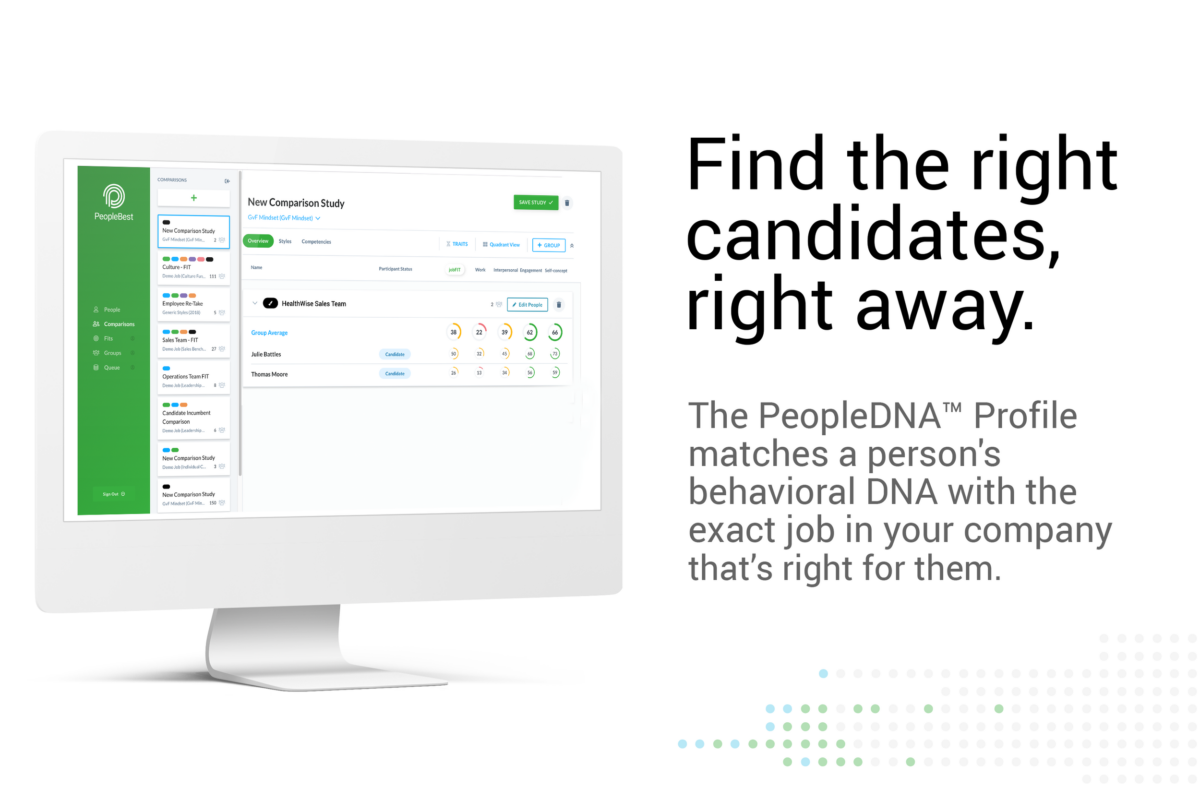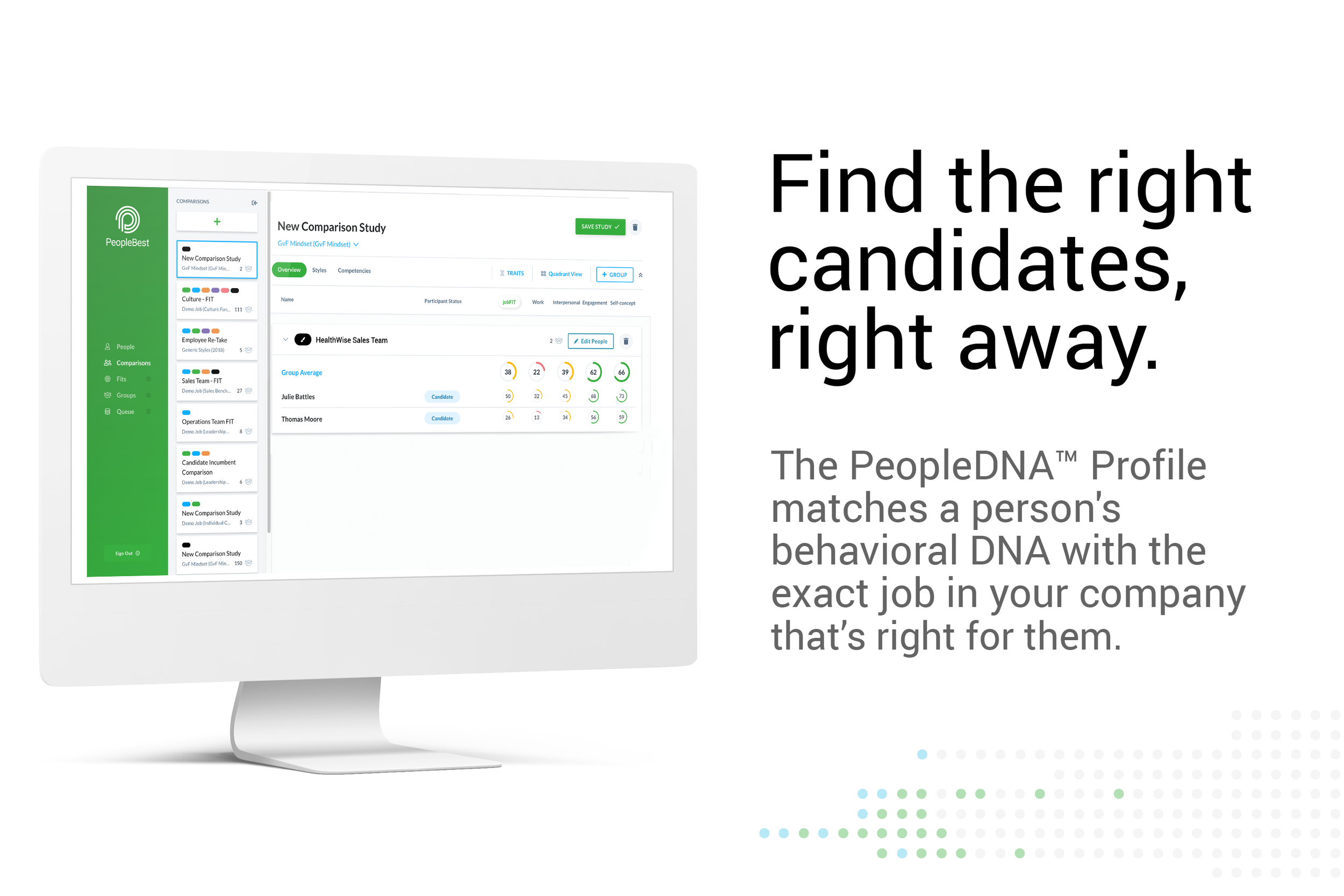PeopleBest Offers Team Comparison Report
Today’s teams are more diverse, dispersed, digital and dynamic. This creates a growing imperative to move information and energy through the organization and reduce friction that slows progress. How do leaders build trust and attentiveness in their teams on what matters? How can the team stay ‘on point’ during strategic shifts?
These questions and more are on the minds of organization leaders. We take the challenge of equipping leaders seriously. In times of rapid change and dispersed work, real-time insights are imperative. The PeopleBest Team Comparison report addresses these questions and more by bringing behavior intelligence so that managers can plan and decide their best moves. This simple yet in depth view can even help the leader assign reps to the type of clients they are best suited to serve.
Take a recent sales organization client who was tasked with increasing the number of signed contracts from small to large-scale accounts. Management wanted to understand how to optimize productivity and personalize their approach to coach and mentor individuals. We reviewed diverse styles of team members in areas such as engagement, workstyle and interpersonal. The engagement quadrant view showed the ‘ideal range’ in light blue and plotted individuals on the graph. We discovered that some team members worked best with structure and defined processes. Others were highly responsive and their effort were “all-in”. There are advantages and disadvantages to both groups but now the managers were able to personalize training, coaching and feedback to optimize future performance.
We also looked at a comparative view of key sales competency strengths which showed who needed training on areas such as presentations skills, negotiating and closing the sales process. It also identified team members that excel in those areas so they could provide real-time mentoring of peers.
Every business leader wants skilled and capable team members — that goal is a given. But managers must be able to unify the diversity of talent around common goals by providing clarity on responsibilities and expectations. The Team Comparative reveals differences in motivators and workstyles and can facilitate assigning small teams to solve problems, with individuals that complement one another and collectively will build a better solution.
Tech Specs:
Individuals take the PeopleBest assessment. The results are aggregated and the output creates a comparison in several key areas such as styles, competencies, traits and mindset. All of these elements create the story on how to grow and leverage your team’s performance. This output is reviewed with all team members who engage in ideas that will increase their effectiveness.
Content Summary:
Whatever your business challenges are, the ability to see your team’s strengths and opportunities side by side will bring clarity and give you the ability to leverage people’s capabilities and diversity to achieve new levels of success. Managers learn how to have more effective one-on-one sessions which will lift performance of the entire team. Contact PeopleBest today and schedule a team comparison assessment.












